Baoxiangsi Scenic Area
Baoxiang Temple scenic spot is located in the northwest corner of Wenshang County. It is a famous Buddhist cultural tourist resort in China. Baoxiang Temple scenic spot is a national AAAA level scenic spot. Baoxiang Temple, the core attraction of the scenic spot, was built in the Tang Dynasty. Its original name was Zhaokong Temple. When Song Zhenzong fenced Mount Tai of Chan, it was stationed in Zhewen. Zhaokong Temple of Royal Gift was Baoxiang Temple. After thousands of years of vicissitudes of life, it has become a treasure land for the imperial generals and celebrities to visit Buddhas and become a famous temple in Qilu. On March 15, 1994, 141 Buddhist sacred relics such as Buddha's teeth and Buddha's relics unearthed in the Palace of the Prince's Spirit Tracker Pagoda of Baoxiang Temple, especially the appearance of Buddha's teeth and Buddha's relics of Sakyamuni, shocked the whole country, shocked the world and made Baoxiang Temple enjoy the reputation of "the Second Famen Temple" at home and abroad.
Historical evolution
Baoxiang Temple, located in Wenshang County, Shandong Province, is one of the earliest Buddhist temples in China. From the existing statues of bronze and gold Buddha in the Northern Wei Dynasty, stone-carved Maitreya in the Eastern Wei Dynasty, Prajna tablet in the Northern Qi Dynasty and the inscription stone in the Buffalo Mountain Cliff Dou, a large number of Buddhist relics records show that the original name of Baoxiang Temple was Zhaokong Temple, which should be built in the Northern and Southern Dynasties. It has a history of more than 1,500 years. It was a famous imperial temple in the Northern Song Dynasty, and was a famous monastery in the first year of Dazhong Xiangfu (A.D During the return journey through Qufu and Zhongdu, the Zhaokong Temple of Royal bestowal was Baoxiang Temple, and lived in Zhubaoxiang Temple. The Prince's Spirit Tracker Tower in the temple was built between the sixth year of Xining and the second year of Zhenghe (1073-1112 A.D.). It is a typical Royal Buddha's Tooth Pagoda built by Tai Yun, an assistant virtuous monk in charge of Buddhism, who was bestowed by the Purple Monk Zhirou by the Beijing Master and imitated the inspiration pagoda of Kaibao Temple (now Kaifeng Iron Pagoda).
In 1938, Japanese invaders shelled Baoxiang Temple and Xueshu Huang'an Street, leveling the ancient temples for thousands of years and robbing them in turn; during the civil war in 1947, the body of the tower was severely damaged by artillery shells; in 1958, ten thousand kilograms of iron clock made in Taisan (479 A.D.) of the Northern Wei Dynasty in the temple was smashed into steel; in the early period of the Cultural Revolution, the railings of the tower were stolen and destroyed; in the early 1970s, the exposed tower foundation was cleaned up with cement. The skirt was protected and the underground palace treasure was lucky to escape that crazy age. It was not until 1994 when the pagoda was built and the cement skirt was removed that the entrance to the underground palace at the base of the pagoda was unexpectedly discovered. 141 Buddhist sacred objects such as golden coffins, silver coffins, Buddhist teeth, relics and kneeling Bodhisattvas were found in the pagoda palace. The unearthing of Buddhist relics shocked the whole country and the world. More than 140 countries and regions have reported one after another. The news was prominently published on the front page of People's Daily. CCTV broadcasted the news of the emergence of Buddhist relics in Wenshang on the news broadcasting program. Newspapers and radio stations around the country also reproduced and disseminated the news one after another.
Since 1995, the construction of Baoxiang Temple has been restored. Baoxiang Temple is an ancient temple and famous temple on the earth of Qilu after thousands of years of incense and fire.
Temple scenery
The main landscapes are: Prince's Spirit Track Tower, Devotion Hall, Pagoda Palace, Buddhist Capital Sacred Site Treasure Hall, Stele Gallery, Baoxiangsi Architectural Complex, Lifo Square and Lifo Avenue.
The Prince's Spirit Track Tower, built between the sixth and second years of Xining (1073-1112 A.D.), is an octagonal 13-storey Pavilion brick tower with a wooden-like arch structure. The tower is 41.75 meters high, exquisitely crafted, simple and elegant, magnificent, majestic and tall. It is a Song-style Buddhist pagoda conforming to the Architectural Regulations of the Buddha's Tooth Shrine Tower. The name of the tower is the original name recorded on the stone casket when the underground palace was opened in 1994. After the excavation of Buddhist sacred objects, every year on March 15 of the lunar calendar, major Buddhist activities are held to worship the sacred objects, attracting many Buddhist personages and tourists to worship. Around the 15th day of the March of the lunar calendar, Buddhist light appeared over the Prince's Spirit Tracking Tower, which became a spectacle attracting many tourists and residents. The worship Hall of Baoxiang Temple is now dedicated to Sakyamuni Sandalwood Golden Buddha and Bluestone Painted Sculpture of 18 Arhats. The pagoda palace covers an area of 80 square meters. The deep part of the pagoda palace is dedicated to Sakyamuni's real Buddha teeth.
Introduction
Wenshang Baoxiang Temple scenic spot is located in the northwest corner of Wenshang County in southwestern Shandong Province, formerly known as Zhaokong Temple. When Song Zhenzong Zen closed Mount Tai, it was stationed in Zhanwen. After thousands of years, the imperial Zhaokong Temple has been a treasure spot for emperor generals and celebrities. It has become a famous Buddhist Temple Temple on Qilu land. After thousands of years of storms and storms, the monastery remains intact. On March 15, 1994, 141 Buddhist sacred relics such as Buddha's teeth and Sari unearthed from the Pagoda Palace of the Prince's Spirit Tracker in Baoxiang Temple are extremely precious. After more than 10 years of restoration and construction, the Prince's Spirit Tracking Tower, the Temple of Devotion, the Pagoda Palace, the Buddhist Museum of Sacred Relics, the Stele Gallery and the Daxiong Palace have been successively completed. The Prince's Spirit Tracking Tower is a Buddhist pagoda of the Song Dynasty. It is 45.5 meters high and 13 levels. It is the highest level of Buddhism. This proves that the Buddha's teeth and relics worshipped by the pagoda Palace are the spirits of Buddha. The Hall is dedicated to Sakyamuni sandalwood gold-pasted Buddha and blue stone painted sculptures of 18 Arhats. The pagoda palace covers an area of 80 square meters. The deep part of the pagoda palace is dedicated to Sakyamuni's real Buddha teeth.
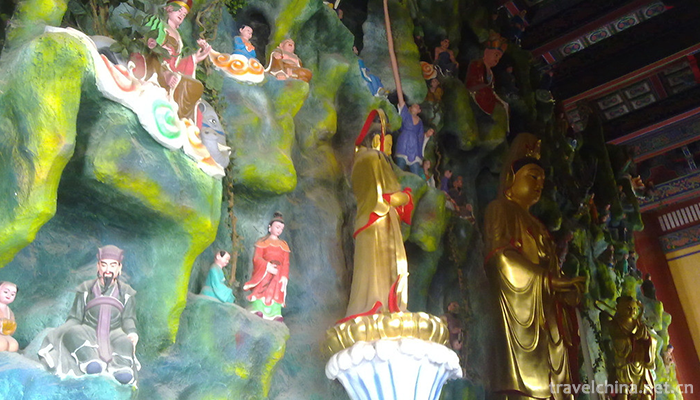
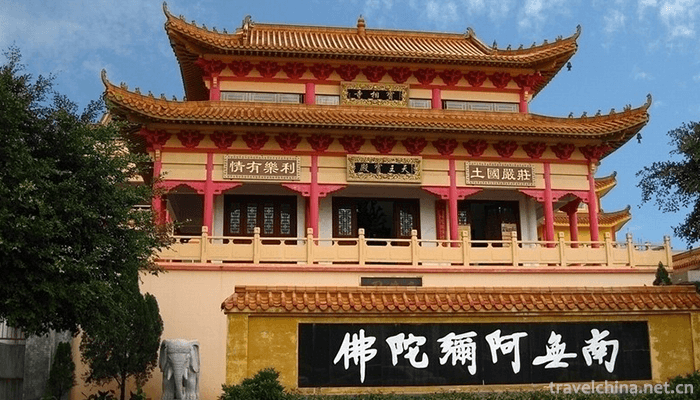
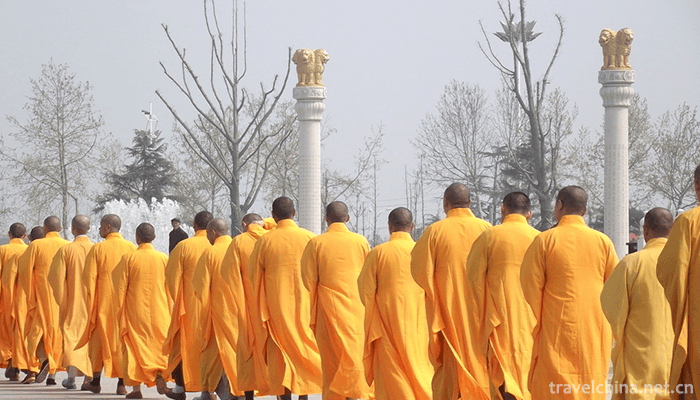
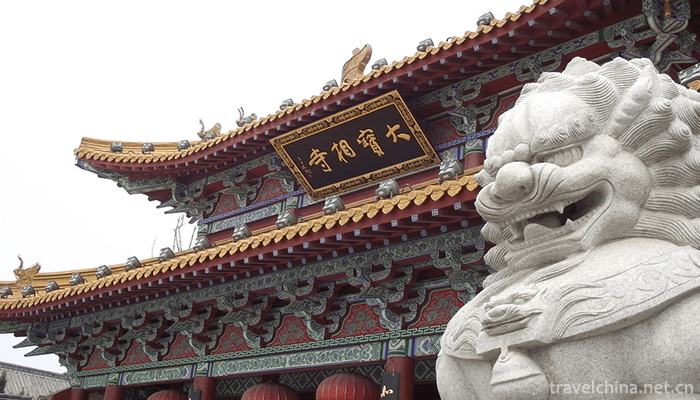
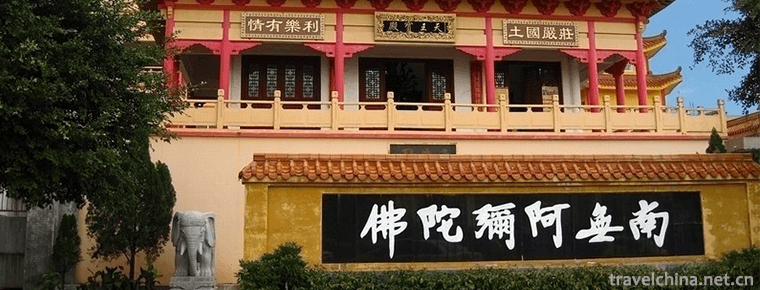
-
2.Karajun Scenic Area
Karajun is Kazakh, meaning "the wilderness on the ridge". Karajun Mountain is a stretch of mountains from east to west. On both sides of it are hills with ravines and combs
Time 2018-12-12 -
3.Lion Mountain Scenic Area
Lion Mountain Scenic Area is located in the east of Shaoshan Scenic Area, which is divided into Lion Mountain Scenic Area and Benbenling Scenic Area.
Time 2019-02-08 -
4.Zhaohua Ancient City Scenic Area
The ancient city of Zhaohua has a long history and rich humanities in Zhaohua Town, Zhaohua District, Guangyuan City, Sichuan Province. The original name of Yichang County was changed to Zhaohua Count
Time 2019-03-17 -
5.Two clip string
Two chords, also known as the "big five tones" by the masses. One of the traditional Chinese operas. It is mainly popular in Western Shandong, Eastern and Northern Henan,
Time 2019-04-28 -
6.Luo Juan Opera
Luojuan opera, commonly known as trumpet opera, is one of the local operas and one of the national intangible cultural heritages spread in Runan County of Henan Province and Dengzhou City of Henan Pro
Time 2019-05-15 -
7.regong art
Regong art is an important part of Tibetan Buddhist art in China and a school with wide influence. It originated in Longwu River Basin in Tongren County, Huangnan Tibetan Autonomous Prefecture, Qingha
Time 2019-06-11 -
8.Four Seasons Production Adjustment
Four seasons production tune includes five units: introduction, winter, spring, summer and autumn. The introduction emphasizes the significance of the four-season production tune inherited by the ance
Time 2019-06-16 -
9.Xuan dance
Xuan is the Xiangxiong language. The earliest name used by Yongzhong Ben religion of the ancient Xiangxiong Buddha is "Xuan" dance. Xuan has more profound and profound implications. Xuan is
Time 2019-07-09 -
10.Wangcong Temple
Wangcong temple, located in the southwest of Pidu District, Chengdu City, Sichuan Province, is 23 kilometers away from Chengdu City. It was built in memory of Du Yu, the earliest king of Shu, and his successor Cong di.
Time 2020-11-05 -
11.Natural resources of Panzhihua
Panzhihua is rich in hydropower resources, with theoretical reserves of more than 6.879 million kilowatts and exploitable capacity of 5.994 million kilowatts. The distribution of hydropower resources in Panzhihua area is concentrated, mainly distributed in the Jinsha River and Yalong River, as well as the tributaries of Anning River, Yongxing River and Tengqiao river.
Time 2020-12-14 -
12.Nanchong location
Nanchong City is located in the northeast of Sichuan Basin, in the middle reaches of Jialing River, between 30 ° 35 ′ N ~ 31 ° 51 ′ N and 105 ° 27 ′ ~ 106 ° 58 ′ E. With a span of 165 km from north to South and 143 km from east to west, it is adjacent to Dazhou
Time 2020-12-17